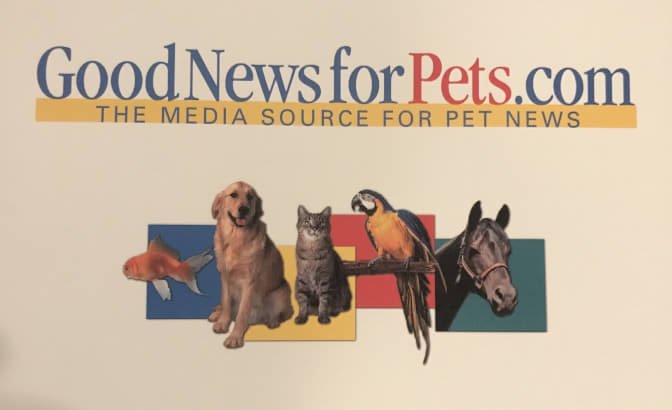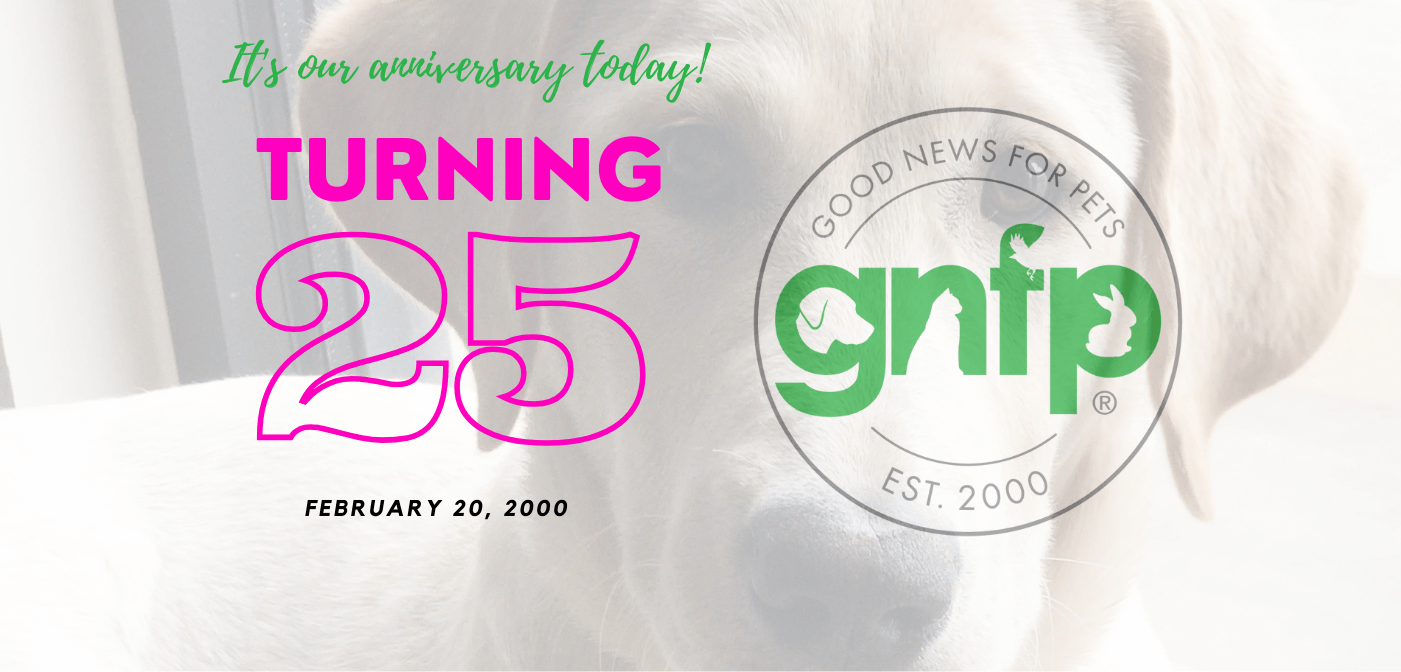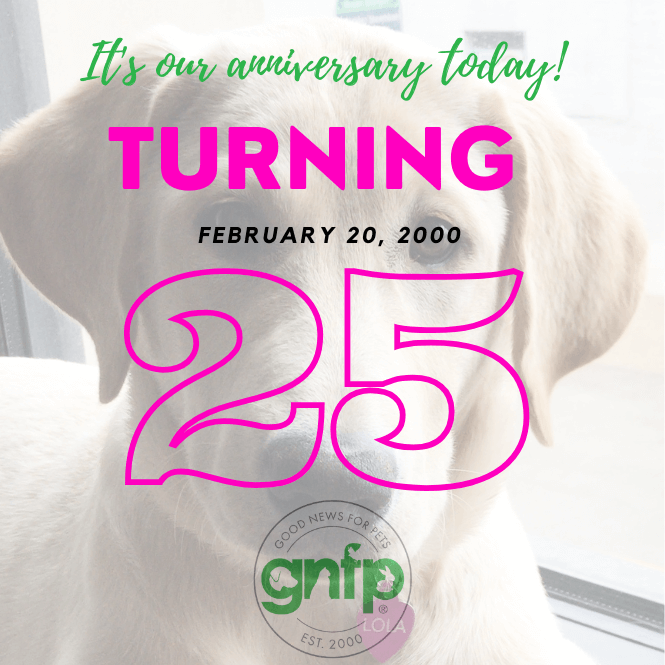The basis of training any animal is winning its trust, confidence and respect. True training cannot begin until the animal has accepted you as its leader, respects you and entrusted you with his or her confidence.
The mistake many puppy owners make is mistaking love and affection for respect and confidence. While it is certainly important to love your new puppy, it is also very important that the puppy respect you and see you as his leader. Dogs are naturally pack animals, and every dog looks to the lead dog for advice and direction. Making you the pack leader is vital to the success of training any dog.
Failure to gain the respect of the dog can create a dog that is disobedient, out of control and even dangerous. Problem dogs are dangerous, whether they are created through bad breeding, owner ignorance or improper training. It is important to train the dog right from the start, since retraining a problem dog is much more difficult than training a puppy right the first time.
If you are reading this series of entries for the first time, you might want to start at the beginning: Time for puppy preschool: Get the basics for positive dog training
Advanced Dog Training Exercises

Coming when called is a vital skill that every dog must learn, both for its own safety and that of those around it. A disobedient dog that refuses to come when called could easily be hit by a car, get into a fight with another dog, or suffer a variety of other bad experiences. A well trained dog that comes when called can safely be taken out to play in the local park, at the beach, on the hiking trail, or anywhere else the owner and dog may wish to go.
Basic training to come when called is relatively easy and straightforward, and involves providing praise, treats and other perks when the dog does as his owner wants. After these basic “come when called” training exercises are mastered, there are a number of fun exercises that can be introduced to challenge the dog and pique its interest.
Making training into a fun game is one of the best ways to motivate dogs and handlers alike. It is easy for training sessions to become routine and boring, and it is important to keep them from degenerating into this state.
Before beginning any food based training exercise, it is important to make sure that the dog is properly motivated and ready to respond to treat based training. Testing the dog is simply a matter of taking a piece of his regular food and waving it in front of the dog’s nose. If the dog shows great enthusiasm for the food, it is ready to start the training. If not, it is best to wait until the dog is in a more receptive mood.
The treats that work best for treat based training games like hide and seek are small pieces of chicken, cheese or liver. In other words, something your dog will love. It is best to use very small pieces to avoid over-feeding the dog during the training sessions.
One great game for you and another family member or friend to play with your dog is simply back and forth recall. This is a great exercise for teaching your dog to come whenever it is called by a member of the family. Dogs often learn to only respond to one person, and this can be a problem when other people are watching the dog. That is one reason why professional dog trainers always insist on working with the owner as well as the dog. A well trained dog must learn to respond to whoever is in charge, not just the owner or usual handler.
In the back and forth recall game, two or more people stand approximately ten yards apart, in a safe place like a fenced in yard. One person calls the dog and asks him to sit and wait until another person asks the dog to come. When the dog responds to the command to come, it is rewarded with a treat. Most dogs respond wonderfully to this exercise and love playing this game. When playing the back and forth recall game, it is important that only the person who called the dog be allowed to give the dog a treat.
After the dog has mastered the back and forth recall game, the humans in the game can start to spread further out, thus turning the back and forth recall game into a fun game of hide and seek. The hide and seek game starts with two or more people in the center room of the house. Every time they call the dog to come, they spread out further away from where they started. As the game continues, one person will be at one end of the house, while another may be at the opposite end. What makes the hide and seek game so much fun for the dog is that he must seek out the person to get the treat, instead of simply running up to a person in plain sight. This type of seeking behavior appeals to many of the dog’s natural instincts. After all, dogs are naturally hunting animals, and seeking out food is second nature to them.
Keeping Your Dog Motivated

Keep the attention of a dog while training is not always easy. Dogs can be easily distracted, and it is important to not allow the training sessions to be sabotaged by boredom. Making training fun for the dog and the human alike is vital to creating a happy, well-adjusted and well trained dog.
Providing random positive stimuli during the day is a great way to keep the interest of the dog. Doing things the dog enjoys, like walking in the park, riding in the car, and playing with other dogs, is a great way to keep the dog’s attention and reward him for small successes.
For instance, in order to reward the dog for coming to you, for instance, ask the dog to come to you, without giving any clues about a walk, a car ride, or other treats. After the dog has come to you and obediently sat down, attach the leash and start the reward. This can be either the aforementioned walk in the park, ride in the car, or anything else the dog likes to do.
Providing some kind of reward, whether a treat, a special outing or just a scratch behind the ears during each time the dog does something you want is a great way to keep your dog motivated. If the dog knows something great is going to happen every time he obeys your command, he will be motivated to please you every time.
When training any dog, it is important to not let distractions disrupt the training. The dog must be taught to ignore distractions, such as other people, other dogs, other animals and loud noises, and focus on what is being taught. These types of distractions can even be used as rewards when training the dog to come when called.
For instance, if your dog enjoys playing with other dogs whether in a local dog park or with the neighbor’s dogs, let him play freely with those other dogs. Then go into the park or yard and call your dog. When he comes to you, provide lots of praise, treats and other rewards, then immediately allow the dog to go back to playing with his friends. Repeat this several times and praise the dog each time he comes to you. The dog will quickly learn that coming to you means good things (treats and praise) and not bad ones (being taken away from the park).
If the dog does not master this particular type of training right away, try not to get discouraged. So called distraction training is one of the most difficult things to teach. Dogs are naturally social animals, and breaking away from the pack is one of the most difficult things you can ask your dog to do. Most dogs will be understandably reluctant to leave their canine companions, but it is important to persist.
Training the dog to come to you may require some creativity on your part at first. For instance, waving a favorite toy, or a lure, is a great way to get your dog’s attention and put the focus back on you. If your dog has been clicker trained, a quick click can be a good motivator as well.
Once the dog begins to get the hang of coming when called, you can begin to reduce and eliminate the visual cues and focus on getting the dog to respond to your voice alone. It is important that the dog respond to voice commands alone, since you will not always have the availability of a toy or other lure.
If you want to learn the basics of dog training, say no more, here you go: Puppy 101: A beautiful journey through dog training
Dealing With Separation Anxiety

Separation anxiety, also known in the dog training world as owner absent misbehavior, is one of the most frequently encountered problems in the world of dog training. Separation anxiety can manifest itself in many different ways, including chewing, destroying the owner’s property, excessive barking, self-destructive behavior and inappropriate urination and defecation.
Dogs suffering from separation anxiety often whine, bark, cry, howl, dig, chew and scratch at the door the entire time their family members are away. Well-meaning owners often unwittingly encourage this misbehavior by rushing home to reassure the dog, but it is important for the well-being of both dog and owner that the dog learns to deal with extended periods of separation.
How the owner leaves the house can often contribute to separation anxiety issues. A long and drawn out period of farewell can make matters worse by making the dog feel even more isolated when the owner finally leaves. These long types of farewells can get the dog excited, and then leave him with lots of excess energy and no way to work it off. These excited, isolated dogs often work off their excess energy in the most destructive of ways, such as chewing up a favorite rug or piece of furniture.
Excess energy is often mistaken for separation anxiety, since results are often the same. If you think that excess amounts of energy may be the problem, try giving your dog more exercise to see if that eliminates the problem.
If separation anxiety is truly the problem, it is important to address the root causes of that anxiety. In order to prevent separation anxiety from occurring, it is important for the dog to feel happy, safe, secure and comfortable while the owner is away for the day. It is important, for instance, to give the dog plenty of things to keep it busy while you are away. This means providing it with lots of toys, such as balls or chew toys. A pet companion is often effective at relieving separation anxiety as well. Giving the dog a playmate, such as another dog or a cat, is a great way for busy pet parents and pets alike to cope with the stress of being left alone.
Setting aside scheduled play times, during which the pet is given your undivided attention, is another great way to alleviate boredom and separation anxiety. Playing with the dog, and providing it with sufficient attention and exercise is a proven way to avoid a stressed and anxious dog. A happy dog that has been well exercised and well-conditioned will generally sleep the day away happily and patiently wait for the return of its owner. It is important to schedule one of these daily play sessions before you leave the house each day. It is important to give the dog a few minutes to settle down after playtime before you leave.
For dogs that are already experiencing separation anxiety and associated misbehaviors, it is important to get them accustomed to your leaving gradually. Be sure to practice leaving and returning at irregular intervals, several times during the day. Doing so will get your dog accustomed to your departures and help them realize that you are not leaving them forever; Dogs that have been previously lost, or those that have been surrendered to shelters and readopted, often have the worst problems with separation anxiety. Part of treating this problem is teaching the dog that you’re leaving is not permanent.
Preventing Unwanted Urination

Dogs often urinate when they become overly excited, and dogs that are otherwise perfectly housebroken sometimes show their excitement by dribbling urine when greeting you excitedly. It is normal for some dogs to urinate when they get excited, and this can be a particular problem for many older dogs.
A lot of excitement induced urination occurs in young puppies, and it is caused by a lack of bladder control. The puppy may not even know he is urinating, and punishment will simply confuse him. Becoming angry with the puppy will quickly cause excitement urination to morph into submissive urination, thus compounding the problem. As the puppy gets older and develops better bladder control, this type of excitement urination should disappear.
The best cure for excitement urination is prevention. Preventing your dog from becoming over excited is the best way to control this problem behavior. If your dog is excited by a particular stimulus or situation, it is important to repeatedly expose him to that situation until it no longer causes excessive excitement.
Submissive urination is a natural part of pack behavior among animals like dogs and wolves. The submissive member of the pack shows his or her submissiveness by lowering itself and urinating. Since dogs are pack animals, they may show their submissiveness to their owner, who they regard as the pack leader, by exhibiting this submissive urination.
Dogs who exhibit submissive urination are usually showing their insecurity. Previously abused dogs often exhibit submissive urination. These dogs need to be shown that there are more appropriate ways to express their submissive status, such as shaking hands or licking the owner’s hand.
The best way to deal with submissive urination problems is often to ignore the urination. Trying to reassure the dog can give the mistaken impression that you approve of the behavior, while scolding the dog can make the submissive urination worse.
Correcting problems with submissive urination should be directed at building the dog’s confidence and teaching him other ways to show his respect. Teaching the dog to lift his paw, sit on command, or similar obedience commands, is a great way to direct the dog’s respect in a more appropriate direction.
Problems with urination are not always easy to deal with, but it is important to be consistent, and to always reward acceptable behavior on the part of the dog. When urination problems do occur, it is always a good idea to first rule out any medical conditions that could be causing those problems. Medical issues like bladder infections can be the root cause of problems with unwanted urination.
After any medical problems have been ruled out, it is important to determine what is causing the problem, and treat it appropriately. While it can be tempting to punish the dog for inappropriate elimination, doing so will only confuse and further intimidate him.
Are you still deciding whether to adopt a new puppy or not? You might this entry interesting: Welcome Home Buddy: Tips For Adopting A New Puppy Or Dog
How To Train Your Dog Not To Chase

Dogs by nature are predatory animals, and all predatory animals share the motivation to chase fleeing objects. While this may be a natural instinct, it is not appropriate when those fleeing objects are joggers, bicyclists or the mailman.
Training the dog not to chase people and bicycles is an important thing to do, and it is best to start that training as early as possible. Starting when the dog is still small and non-threatening is important, particularly with breeds that grow very large, or with breeds that have a reputation for being very aggressive. Many people respond to being chased by a dog, especially a large dog, with understandable fear, and it is best for yourself and your dog that he be trained not to chase before he reaches a threatening size.
Some dogs are easier to train away from chasing than others. Breeds that have been used for hunting or herding often retain much more of their chasing instincts than other types of dogs, for instance.
No matter what breed of dog you are working with, however, it is important to not allow him off the leash until his chasing behavior has been curbed. Allowing an untrained dog off the leash is dangerous, irresponsible and illegal.
Before you expose your dog to a situation where he will want to chase someone or something, be sure to train him in a safe, controlled area like a fenced yard. It is important for the dog to be able to focus and concentrate on you, and for him to understand what behavior you want. The dog must be given the opportunity to repeatedly perform the behavior you want while in this controlled setting.
The training session should be started indoors in the dog’s home. The dog should be put on a leash at one end of a hallway or room, and the owner should stand at the other end. The owner then waves a tennis ball in front of the dog but does not allow him to touch it. After that, the tennis ball is rolled to the other end of the hallway or the room, and the command “Off” is used to tell the dog not to chase the ball. If the dog starts out after the ball, use the command “Off” once again and give a firm tug on the leash.
When doing this type of training, it is vital that the dog not be allowed to touch the ball. If he actually reaches the ball, he may think that “Off” means to get the ball. This exercise should be repeated several times, until the dog has learned the meaning of the “Off” command. When the dog responds correctly by not chasing the ball, he should be rewarded with a special treat.
After the dog seems to understand his new game, move to another room and try the same thing. Repeat the exercise in several rooms of the house, in the garage, etc. After the dog has seemingly mastered the game and learned the meaning of the “Off” command, you can work with him without the leash, but still only in a safe area like your own home or a fenced in yard. It may take some time for the dog to fully master control of his chasing instinct, and it is important not to rush the process, or to leave the dog off leash until you are sure he is fully trained.
To test the training in the real world, enlist the assistance of a friend to pose as a jogger. It is important that the dog does not see and recognize this person; he has to assume that it is a stranger in order for the test to be valid. Stand with the dog on his leash and have your friend jog by a couple of times while you do the “Off” exercise. If the dog does as he is asked, be sure to provide lots of praise and treats. If he starts after the “jogger”, give a firm reminder by tugging on the leash.
Training Your Dog Not To Fear Loud Noises

Loud noises, such as fireworks, thunder and traffic, are one of the most frequently cited fears given by dog owners. It is natural for some dogs to be fearful of loud noises, but some dogs are so traumatized by thunder, fireworks and other loud noises that they are completely unable to function.
Dogs that display excessive fears or phobias such as these can be a danger to themselves and those around them. Dogs may manifest their fear in self-destructive ways, like slinking under the couch or the bed and getting stuck, for instance. They may also react in ways that are destructive to the home, such as urinating or defecating on the carpet, chewing up favorite items, or barking incessantly. These reactions are often worse when the owner is not at home.
One thing that is hard for many dog owners to understand is that soothing or stroking a dog that is displaying fear is exactly the wrong thing to do. While it is natural to try to calm a fearful dog, to the dog you are rewarding it for being afraid. The dog likes the sound of your voice, likes your petting, and concludes that he has done the right thing by acting afraid. This only makes a bad situation worse.
The best strategy when the dog displays fear when there is a thunderstorm or a fireworks display is to simply ignore the dog. It is of course important to watch the dog to make sure he does not hurt himself, but otherwise just ignore him and let him work through the fear on his own. When you go away, be sure to make sure there is nothing the dog can get stuck under, since fireworks or a thunderstorm can pop up at any time.
A dog that is severely afraid of thunderstorms and other loud noises may need to be confined to a single room, or even a crate, for a period of time. After the dog feels safe in his “den”, he may be able to deal with his fears a little better. It can be quite a struggle to teach a dog not to be afraid of thunderstorms, firecrackers and other such noises, but it is important that the dog at least be able to control his fears without being destructive to himself or his environment.
Much as magicians use sleight of hand to hide their tricks, so dog owners practice the art of distraction to take their dog’s mind off of their fear. For instance, if your dog is afraid of thunderstorms and you know one is on the way, gather some of your dog’s favorite toys and get ready for the misdirection.
Of course, your dog will probably know the thunderstorm is on the way before you do. When you see your dog start to display fear, take a few of his favorite toys and try to get him to play. Very fearful dogs may be reluctant to play, but it is important to try nevertheless. Often a few treats can be a good distraction as well. Try buying one of those balls that you can fill with treats or biscuits, and encourage your dog to chase it.
Try playing with your dog every time a thunderstorm is in the forecast. This can start to implant good memories, and these can sometimes replace the fear memories that caused the dog to be afraid of thunderstorms in the first place.
Desensitization is a highly effective way to deal with phobias and fears in humans, and it can be very effective for dogs and other animals as well. Desensitization involves introducing the dog to small amounts of whatever noises frighten him. For instance, if the dog is afraid of thunder, try tape recording your next thunderstorm and play it back slowly when the dog is relaxed. Reward the dog for not showing fear responses.
This kind of desensitization training can be remarkably effective for some dogs, but it will take lots of patience and hard work. Fears of thunder and fireworks are not always easy to cure.
Are you also a cat person? Owning A Domestic Cat 101: Important Tips, And What Supplies To Get
Teaching Your Dog Not To Chew

Chewing is something that comes naturally to every dog. Every dog feels the instinctual need to sharpen its teeth and hone his biting skills. Chewing on the right things, like specially designed chew toys for instance, can even help the dog clean his teeth and remove plaque.
Even though chewing is natural and healthy, that does not mean that the dog should be given carte blanche and allowed to chew everything in sight. It is vital for every dog to learn the difference between the things it is OK to chew on, like toys and ropes, and the things that are off limits, such as carpets, shoes and other items.
When working with a new puppy, it is advisable to keep the puppy in a small, puppy proofed room for at least a few weeks. This is important not only to prevent chewing but to properly house train the puppy as well.
Older dogs should also be confined to a small area at first. Doing this allows the dog to slowly acquaint him or herself to the smells and sights of the new household.
When you set up this small, confined area, be sure to provide the puppy or dog with a few good quality chew toys to keep him entertained while you are not able to supervise him. Of course the dog should also be provided with a warm place to sleep and plenty of fresh clean water.
As the dog is slowly moved to larger and larger portions of the home, there may be more opportunities to chew inappropriate items. As the dog is given freer access to the home, it is important to keep any items that the dog or puppy should not chew, things like throw rugs, shoes, etc. up off of the floor. If you forget to move something and come home to find that the dog has chewed it, resist the urge to punish or yell at the dog. Instead, distract the dog with one of its favorite toys and remove the inappropriate item from its mouth.
The dog should then be provided with one of its favorite toys. Praise the dog extensively when it picks up and begins to chew its toy. This will help to teach the dog that it gets rewarded when it chews certain items, but not when it chews other items.
Teaching the dog what is appropriate to chew is very important, not only for the safety of your expensive furniture and rugs, but for the safety of the dog as well. Many dogs have chewed through dangerous items like extension cords and the like. This of course can injure the dog severely or even spark a fire.
Most dogs learn what to chew and what not to chew fairly quickly, but others are obviously going to be faster learners than others. Some dogs chew because they are bored, so providing the dog with lots of toys and solo activities is very important. It is also a good idea to schedule several play times every day, with one taking place right before you leave every day. If the dog is thoroughly tired after his or her play session, chances are he or she will sleep the day away.
With this, we conclude our “Time For Puppy Preschool” series. We hope these entries helped you in the process to adapt yourself and your new puppy to your new life together. Please feel encouraged to say hello – we’ll be happy to help with any questions you might have, and if you’d like to comment on our site, products or service, we’d love to hear from you!
Source link























